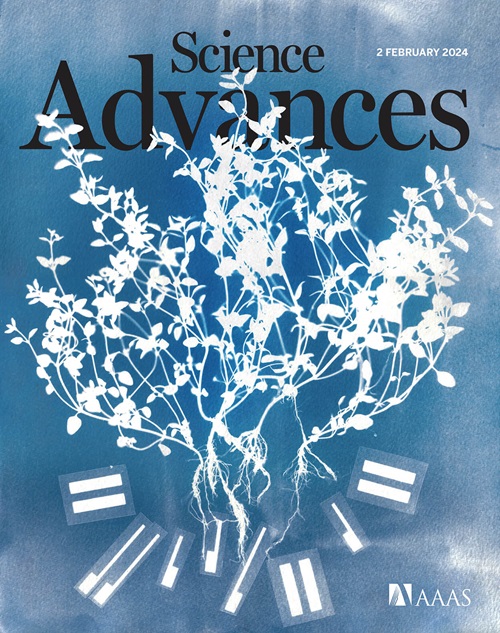一种基于纳米粒子的无线深部脑刺激系统,可以逆转帕金森病。
IF 11.7
1区 综合性期刊
Q1 MULTIDISCIPLINARY SCIENCES
引用次数: 0
摘要
脑深部刺激技术使神经调节具有精确的空间控制,但需要永久植入导管。在这里,我们描述了一种光热无线脑深部刺激纳米系统,该系统能够消除α-突触核蛋白聚集体并恢复黑质中退化的多巴胺神经元,以治疗帕金森病。该纳米系统(ATB NPs)由金纳米壳、抗热敏瞬时受体电位香草蛋白家族成员1 (TRPV1)的抗体和具有近红外响应连接体的β-突触核蛋白(β-syn)肽组成。立体定向注射ATB NPs靶向表达TRPV1受体的黑质多巴胺神经元。在脉冲近红外照射下,ATB NPs作为纳米天线,将光转化为热,通过TRPV1受体导致钙离子内流、去极化和多巴胺神经元的动作电位。同时,ATB NPs释放的β-突触核蛋白肽与由热休克蛋白HSC70启动的伴侣介导的自噬协同作用,有效地消除神经元中的α-突触核蛋白原纤维。这些精心安排的动作恢复了帕金森病的病理多巴胺神经元和运动行为。本文章由计算机程序翻译,如有差异,请以英文原文为准。

A nanoparticle-based wireless deep brain stimulation system that reverses Parkinson’s disease
Deep brain stimulation technology enables the neural modulation with precise spatial control but requires permanent implantation of conduits. Here, we describe a photothermal wireless deep brain stimulation nanosystem capable of eliminating α-synuclein aggregates and restoring degenerated dopamine neurons in the substantia nigra to treat Parkinson’s disease. This nanosystem (ATB NPs) consists of gold nanoshell, an antibody against the heat-sensitive transient receptor potential vanilloid family member 1 (TRPV1), and β-synuclein (β-syn) peptides with a near infrared–responsive linker. ATB NPs by stereotactic injection target dopamine neurons expressing TRPV1 receptors in the substantia nigra. Upon pulsed near-infrared irradiation, ATB NPs, serving as nanoantennae, convert the light into heat, leading to calcium ion influx, depolarization, and action potentials in dopamine neurons through TRPV1 receptors. Simultaneously, β-synuclein peptides released from ATB NPs cooperate with chaperone-mediated autophagy initiated by heat shock protein, HSC70, to effectively eliminate α-synuclein fibrils in neurons. These orchestrated actions restored pathological dopamine neurons and locomotor behaviors of Parkinson’s disease.
求助全文
通过发布文献求助,成功后即可免费获取论文全文。
去求助
来源期刊

Science Advances
综合性期刊-综合性期刊
CiteScore
21.40
自引率
1.50%
发文量
1937
审稿时长
29 weeks
期刊介绍:
Science Advances, an open-access journal by AAAS, publishes impactful research in diverse scientific areas. It aims for fair, fast, and expert peer review, providing freely accessible research to readers. Led by distinguished scientists, the journal supports AAAS's mission by extending Science magazine's capacity to identify and promote significant advances. Evolving digital publishing technologies play a crucial role in advancing AAAS's global mission for science communication and benefitting humankind.
 求助内容:
求助内容: 应助结果提醒方式:
应助结果提醒方式:


